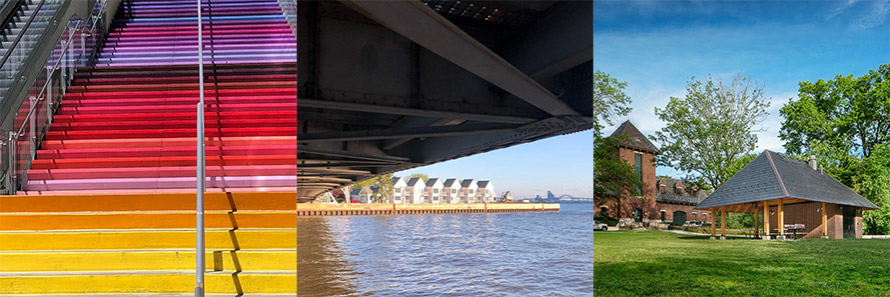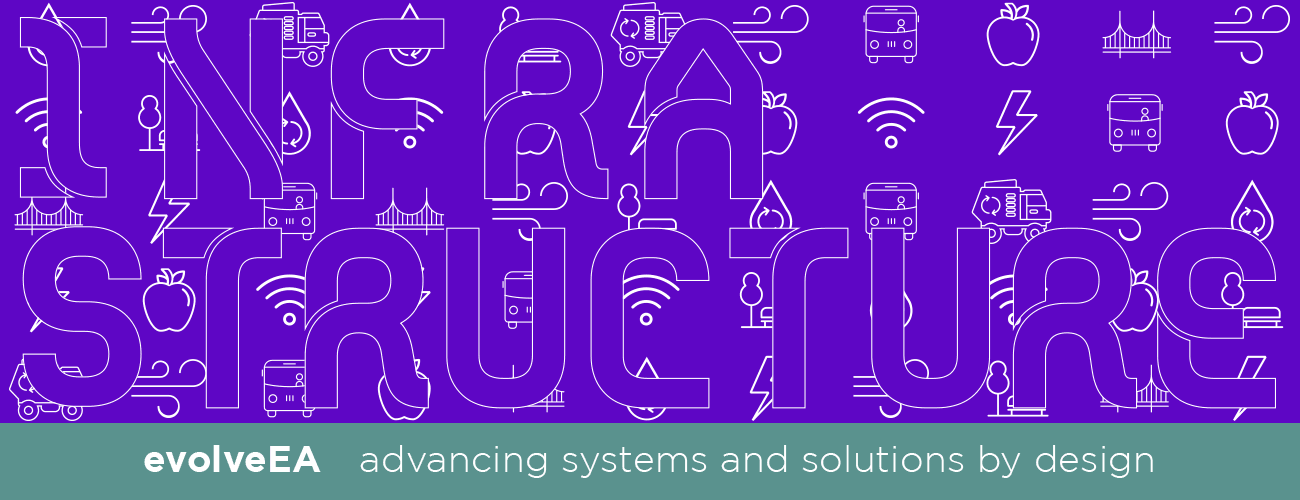Our Infrastructure Beyond 2022
Robust infrastructure is essential for cities to thrive, yet it often remains invisible until it fails. Last week, Pittsburgh lost a major arterial bridge in a dramatic, but fortunately, non-lethal collapse as the bridge gave way without warning. The jarring juxtaposition of a snowy wooded valley strewn with giant slabs of bridge deck opens our eyes to the precariousness of our nation’s infrastructure. Even with President Biden’s promised infusion of federal funds, disasters like the one in Pittsburgh make it apparent that we need to rethink the design and care of infrastructure.

A Port Authority bus in Pittsburgh was on the Forbes Ave. bridge when it collapsed, January 2022. (Courtesy: Tracy Baton / Public Source)
The construction and maintenance of infrastructure is a marathon, not a sprint. Infrastructure failures are the result of systems that prioritize capital expenditure over stewardship of assets. Pittsburgh’s story can be found across the nation and will only intensify with climate change. Dramatic events catch headlines as Katrina flooded New Orleans and wildfires forced an exodus in the Pacific Northwest. Other emergencies progress for months or years without notice, like the incremental unfolding of Flint’s drinking water crisis. Once brought to our attention, we sprint through crises resolving to (re)engineer systems that will keep us safe and we open our coffers to release billions of dollars for deferred investment. The American Society of Civil Engineers’ 2021 Report Card for the Nation’s Infrastructure estimates that the current investment gap is nearly $2.6 trillion over 10 years and continued underinvestment could multiply that number to $10 trillion by 2039.
We need to build smart and simple solutions that plan for long term stewardship, acknowledge the rapid shift in technology, and anticipate challenges of the changing climate. We need responsive systems and nimble institutions that can manage them. As we reinvest in legacy systems and invent the new, we would do well to remember that the dearth of past maintenance has led us to today’s risky situation. In many cases, we are fortunate that past construction methods relied on overbuilding and we should question if today’s projects and technologies could withstand decades of neglect. The care and maintenance of tomorrow’s infrastructure needs to be future proofed and built into design solutions as well as funding models.
Lastly, the investment in physical infrastructure should benefit the social infrastructure of our communities. As we redesign roads and bridges, we need to consider traffic counts and structural loads while we prioritize investments that improve our public spaces and grant access to the places we want to visit. Stormwater management needs to prevent flooding as well as improve the ecology of our cities. Invisible resources like clean air and access to quality food sources need to be considered seriously as urban infrastructure. We need to integrate these issues with land use and understand the implications for communities. Engineering is essential but needs to be guided by ecologically-informed urban design and community intelligence to create solutions that will be valued and cared for by future generations.
Design is essential to the rethink of infrastructure.
As designers, we are trained to imagine material systems that have social and environmental benefit, and our leadership will be essential in the upcoming decades of infrastructure investment. We need to advocate for:
An expanded definition of infrastructure, that includes mobility, water, communications, and energy infrastructure as well as food systems, materials and waste systems, ecological systems, air quality, land use, and other urban systems. As designers, we can advocate for data-rich and dynamic modeling of an expanded field of urban systems.
A commitment to intersecting issues, that demonstrates that each infrastructure system is connected to the other and to the social fabric of neighborhoods and cities. Siloed solutions are less effective and can be more costly – integrated design is key to enabling resilient urban systems. As designers, we are trained to find synergies and alignments and our integrative design methods can be as valuable as well as our effective design solutions.
Equity and environmental justice that is evident in the design of the physical environment as well as its resources and flows. Projects and policies should be grounded in an equity statement and be transparent as to how our communities benefit from access, workforce development, and human and ecological health. As designers, our processes can elevate community voice and expand community capacity to anchor equity in infrastructure design processes.
Generational design that enables and inspires long term stewardship. We make great fanfare over new projects, yet disinvest as a culture in the equally necessary need to thoughtfully and adequately maintain these structures. Infrastructure is a design problem that should be continuously revisited and reinvested and as designers, we need to establish our role providing innovative, asethetic, understandable, and long-lasting design throughout a project’s life-span.
We stand at an important juncture with infrastructure investment on the horizon and architects, landscape architects, and designers are essential to success. As we redesign projects, let’s also redesign effective systems that are made possible by long-term vision, a commitment to maintenance and capital investment, and the integration of community and the environment. Let’s not wait for the next bridge failure to design better, more resilient landscapes, neighborhoods, and cities.

Christine Mondor, FAIA, is Principal of evolveEA and also serves as co-chair of Mayor Gainey’s Infrastructure Transition Committee and is Chair of the City of Pittsburgh Planning Commission.


